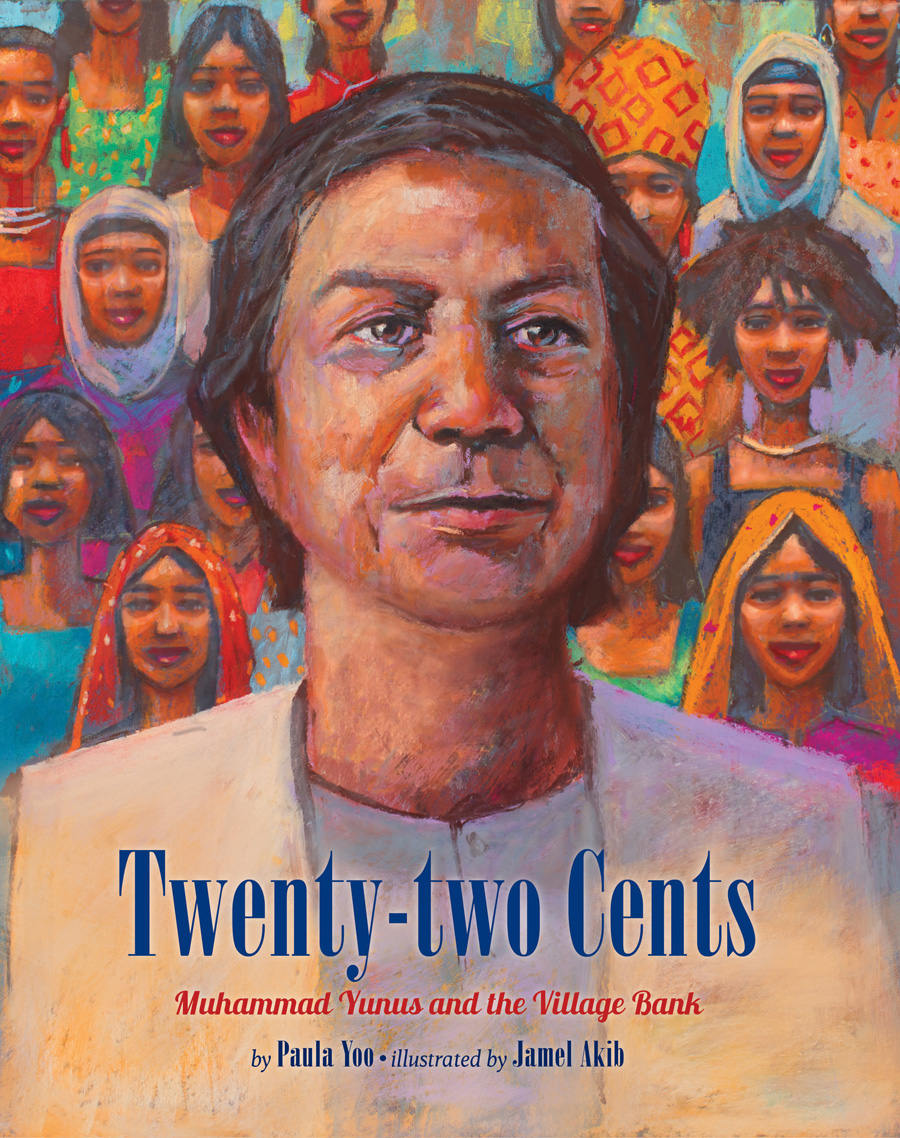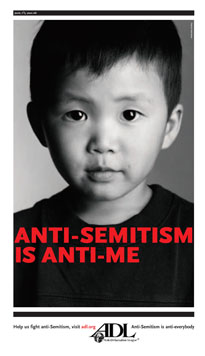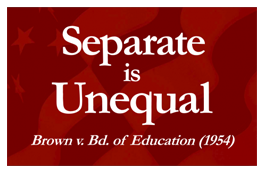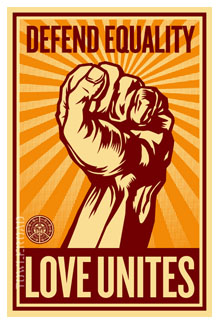Today is Human Rights Day. It commemorates the day in 1948 when the United Nations General Assembly adopted the Universal Declaration of Human Rights. The Universal Declaration of Human Rights lists basic rights and freedoms that every person should get, regardless of race, religion, sexual orientation, or gender.
 Books are a great way for readers to learn about history and culture, and develop empathy for other people.
Books are a great way for readers to learn about history and culture, and develop empathy for other people.
Our Human Rights collection explores the issues of human rights around the world and in the United States, and the great leaders who have fought to protect those rights:
Twenty-two Cents : Growing up in Bangladesh, Muhammad Yunus witnessed extreme poverty. He later founded Grameen Bank, a bank which uses microcredit, lending small amounts of money, to help lift people out of poverty. In 2006, Dr. Yunus was awarded the Nobel Peace Prize.
: Growing up in Bangladesh, Muhammad Yunus witnessed extreme poverty. He later founded Grameen Bank, a bank which uses microcredit, lending small amounts of money, to help lift people out of poverty. In 2006, Dr. Yunus was awarded the Nobel Peace Prize.
Brothers in Hope: Thousands of boys from southern Sudan walk hundreds of miles to seek safety, from Ethiopia to Kenya. This inspiring story is based on the true events of the Lost Boys of Sudan.
When the Horses Ride By: These poems from the point of view of children during times of war let readers experience the resilience and optimism that children who go through these situations experience.
Irena’s Jars of Secrets: Irena Sendler, a social worker born to a Polish Catholic family, smuggled clothing and medicine into jewish ghettos during WWII and then started to smuggle Jewish children out of the ghettos. Hoping to reunite them with their families, Irena kept lists of children’s names in jars.
John Lewis in the Lead: After high school, John Lewis joined Dr. King and other civil rights leaders to peacefully protest and fight against segregation. In 1986, John Lewis was elected to represent Georgia in Congress, where he continues to serve today.
A Place Where Sunflowers Grow: This bilingual Japanese-English picture book depicts life in a Japanese interment camp inspired by author Amy Lee-Tai’s family’s experiences during WWII. Young Mari wonders if she’ll be able to come up with anything to draw in a place where nothing beautiful grows.

Seeds of Change: As a young girl, Wangari Maathai was taught to respect nature and people. She excelled in science and later studied abroad in the United States. When she returned home, she helped promote the rights of women and also began to plant trees to replace those that had been cut down. Wangari Maathai became the first African woman to win a Nobel Peace prize in 2004.
Etched in Clay: This biography in verse follows the life of Dave the Potter, an enslaved young man in South Carolina who engraved poems into the pots he sculpted despite the harsh anti-literacy laws of the time.
Yasmin’s Hammer: Yasmin and her family are refugees in Bangladesh. Young Yasmin works at a brick yard to help her family out, but she longs for the day when she can attend school.
A Song for Cambodia: This the inspirational true story of Arn Chorn-Pond, who was sent to a work camp by the Khmer Rouge regime in Cambodia. His heartfelt music created beauty in a time of darkness and turned tragedy into healing.
The Mangrove Tree: Dr. Gordon Sato, himself a survivor of a Japanese Internment Camp, travels to an impoverished village in Eritrea and plants mangrove trees to help the village of Harigogo become a self-sufficient community.
Want to own this book list? Purchase the whole collection here.
More resources
Is Staff Diversity Training Worth It?
Interpreting César Chávez’s Legacy with Students
7 Core Values to Celebrate During Black History Month
11 Educator Resources for Teaching Children About Latin American Immigration and Migration
The Opposite of Colorblind: Why it’s essential to talk to children about race
Protesting Injustice Then and Now
Thoughts on Ferguson and Recommended Resources
Character Day: Taking a Look at the Traits Needed to Do What’s Right
Books for Children and Educators About Kindness
Infographic: 10 Ways to Lend a Hand on #GivingTuesday



 Independence ”that all men are created equal,” and over time equal rights have been gradually extended to different groups of people. However, equality has never been achieved without heated debate, despite our country’s founding principle that all people are created equal in the first place.
Independence ”that all men are created equal,” and over time equal rights have been gradually extended to different groups of people. However, equality has never been achieved without heated debate, despite our country’s founding principle that all people are created equal in the first place. vehemently demanded the right to vote, think it was fine for African Americans to be denied this same right? It depends. My theory also includes the caveat that empathy for others does not always translate into citizens banding together for the greater good. Then again, the social evolution of the United States is progressing. This progression is the reason the language and message of equality remains relevant.
vehemently demanded the right to vote, think it was fine for African Americans to be denied this same right? It depends. My theory also includes the caveat that empathy for others does not always translate into citizens banding together for the greater good. Then again, the social evolution of the United States is progressing. This progression is the reason the language and message of equality remains relevant. Jefferson’s words made a statement about human rights that became the foundation for a country unlike any other in the world. The signers never anticipated that their vision would eventually embrace so many different kinds of people, but that is the beauty of it. The Declaration was groundbreaking because it provided a foundation of principles and moral standards that have endured to modern times and that accommodate human evolution and its capacity for acceptance.
Jefferson’s words made a statement about human rights that became the foundation for a country unlike any other in the world. The signers never anticipated that their vision would eventually embrace so many different kinds of people, but that is the beauty of it. The Declaration was groundbreaking because it provided a foundation of principles and moral standards that have endured to modern times and that accommodate human evolution and its capacity for acceptance. repeat the same mistakes over and over. However, I believe that the preservation and repurposing of the messages of protest in all their different forms are evidence that we do learn from history, and that we apply these tactics when the moment calls for them.
repeat the same mistakes over and over. However, I believe that the preservation and repurposing of the messages of protest in all their different forms are evidence that we do learn from history, and that we apply these tactics when the moment calls for them.